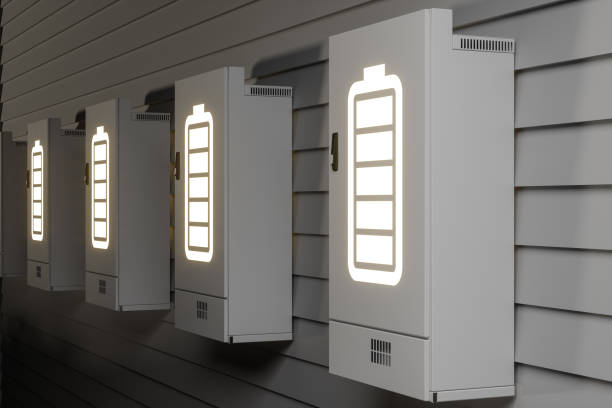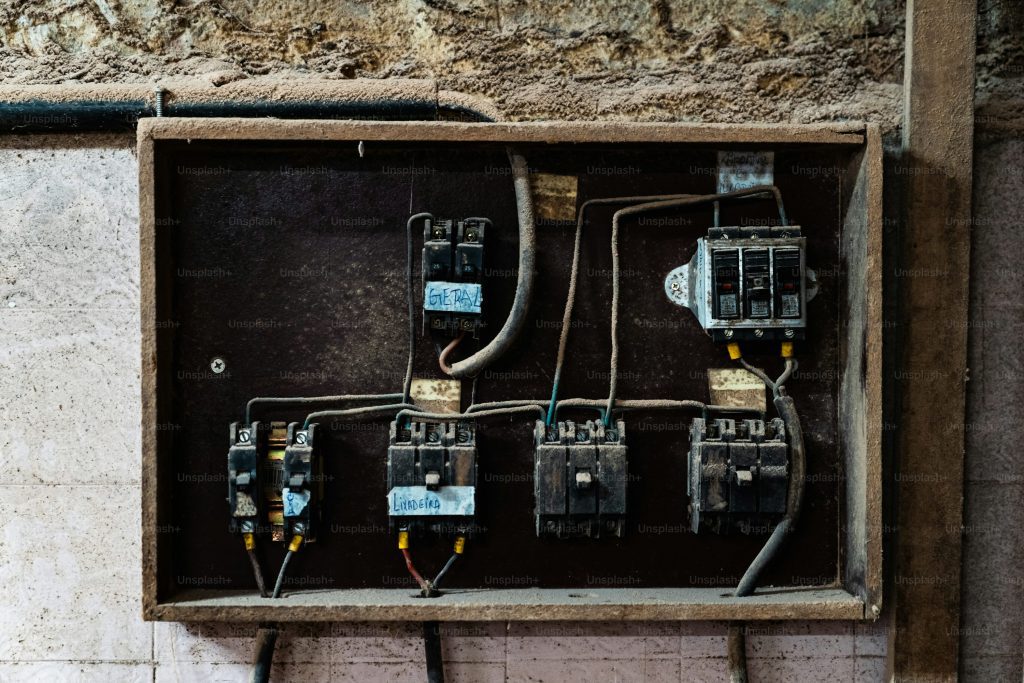Home battery storage systems are an innovative technology enabling homeowners to store surplus energy generated from renewable sources such as solar panels or wind turbines. These systems typically comprise lithium-ion batteries, an inverter and a monitoring system. The batteries store excess energy produced during daylight hours, which can be utilised during peak times or when renewable energy sources are not generating power, such as at night or on overcast days.
The inverter transforms the stored DC power into AC power for household use, whilst the monitoring system allows homeowners to track their energy consumption and battery storage levels. Home battery storage systems offer numerous advantages to homeowners, including reduced dependence on the grid, lower energy costs and a decreased carbon footprint. By storing surplus energy generated from renewable sources, homeowners can utilise clean energy even when sunlight or wind is unavailable.
This not only diminishes reliance on fossil fuels but also aids in stabilising the grid by reducing peak demand. Furthermore, home battery storage systems can provide backup power during grid outages, ensuring homeowners have a reliable electricity source at all times.
Summary
- Home battery storage systems store excess energy generated from renewable sources for later use
- Consider factors such as capacity, efficiency, and compatibility with renewable energy sources when choosing a home battery storage system
- To maximise energy savings, use energy-efficient appliances and consider time-of-use electricity tariffs
- Integrate home battery storage with solar panels or wind turbines to further reduce reliance on the grid
- Regularly maintain and monitor your home battery storage system to ensure optimal performance and longevity
Choosing the Right Home Battery Storage System for Your Eco-Friendly Home
When choosing a home battery storage system for your eco-friendly home, there are several factors to consider. The first consideration is the capacity of the battery system, which will depend on your energy usage and the size of your renewable energy system. It’s important to choose a battery system with enough capacity to meet your energy needs, while also considering future expansion if you plan to increase your renewable energy generation in the future.
Another important factor to consider is the efficiency and lifespan of the battery system. Look for a system with high efficiency ratings and a long lifespan to ensure that you get the most out of your investment. Additionally, consider the warranty and maintenance requirements of the system to ensure that it will be reliable and cost-effective in the long run.
It’s also important to consider the compatibility of the battery system with your renewable energy source and inverter. Some battery systems are designed to work seamlessly with specific solar panels or wind turbines, so it’s important to choose a system that is compatible with your existing setup. Finally, consider the monitoring and control features of the battery system, as these can greatly impact your ability to maximise energy savings and monitor the performance of your system.
Maximising Energy Savings with Home Battery Storage

Home battery storage systems offer numerous opportunities to maximise energy savings and reduce your carbon footprint. One of the key ways to maximise energy savings is through load shifting, which involves storing excess energy during off-peak times and using it during peak times when electricity prices are higher. By using stored energy during peak times, homeowners can reduce their reliance on the grid and lower their electricity bills.
Another way to maximise energy savings is through self-consumption, which involves using stored energy from renewable sources rather than drawing power from the grid. By maximising self-consumption, homeowners can reduce their reliance on fossil fuels and further lower their electricity bills. Additionally, some home battery storage systems offer demand response capabilities, which allow homeowners to participate in utility programs that incentivise reducing electricity usage during peak times.
Home battery storage systems also offer the opportunity to participate in grid services such as frequency regulation and peak shaving, which can provide additional revenue streams for homeowners. By participating in grid services, homeowners can help stabilise the grid and support the integration of renewable energy sources while earning money for their contributions.
Integrating Home Battery Storage with Renewable Energy Sources
| Metrics | Data |
|---|---|
| Renewable Energy Source | Solar Panels |
| Home Battery Capacity | 10 kWh |
| Energy Generated | 15 kWh/day |
| Energy Consumed | 8 kWh/day |
| Energy Stored | 7 kWh/day |
Integrating home battery storage with renewable energy sources such as solar panels or wind turbines is essential for maximising the benefits of both technologies. When integrating a home battery storage system with solar panels, it’s important to consider the size and capacity of the battery system in relation to the solar array. A properly sized battery system can store excess solar energy for use during peak times or when solar generation is low, maximising self-consumption and reducing reliance on the grid.
Additionally, it’s important to consider the compatibility of the battery system with the solar inverter and monitoring system. Some battery systems are designed to work seamlessly with specific solar inverters, allowing for easy integration and optimal performance. Monitoring systems can also provide valuable insights into energy generation and usage, allowing homeowners to track their solar production and battery storage levels.
When integrating home battery storage with wind turbines, it’s important to consider the variability of wind generation and the capacity of the battery system. Wind generation can be unpredictable, so a properly sized battery system can help store excess wind energy for use during low wind periods. Additionally, some home battery storage systems offer advanced control features that can optimise charging and discharging based on wind generation patterns, further maximising energy savings.
Maintaining and Monitoring Your Home Battery Storage System
Proper maintenance and monitoring are essential for ensuring the long-term performance and reliability of your home battery storage system. Regular maintenance tasks may include checking and cleaning the battery terminals, inspecting for signs of wear or damage, and ensuring proper ventilation and temperature control. It’s also important to follow manufacturer guidelines for maintenance and perform any recommended tasks to keep your system running smoothly.
Monitoring your home battery storage system is equally important for tracking performance and identifying any issues that may arise. Many battery systems come with monitoring software that allows homeowners to track their energy usage, battery storage levels, and overall system performance. By regularly monitoring your system, you can identify any potential issues early on and take corrective action to ensure optimal performance.
In addition to regular maintenance and monitoring, it’s important to consider the lifespan of your home battery storage system and plan for eventual replacement. While most modern battery systems are designed to last for many years, it’s important to factor in replacement costs when considering the overall investment in a home battery storage system.
Government Incentives and Rebates for Eco-Friendly Home Battery Storage

Many governments around the world offer incentives and rebates for eco-friendly home battery storage systems as part of their efforts to promote renewable energy adoption and reduce carbon emissions. These incentives can take various forms, including tax credits, rebates, grants, or low-interest loans for purchasing and installing home battery storage systems. In some countries, homeowners may be eligible for tax credits based on the capacity and efficiency of their home battery storage system.
These tax credits can help offset the upfront cost of purchasing a battery system and make it more affordable for homeowners to invest in clean energy technology. Additionally, some governments offer rebates or grants that provide direct financial incentives for installing home battery storage systems, further reducing the cost barrier for homeowners. Low-interest loans are another common form of government incentive for eco-friendly home battery storage systems.
These loans can provide homeowners with affordable financing options for purchasing and installing a battery system, making it easier to invest in clean energy technology without a large upfront payment.
The Future of Home Battery Storage and its Impact on Eco-Friendly Living
The future of home battery storage is bright, with continued advancements in technology driving down costs and improving performance. As battery technology continues to evolve, we can expect to see higher capacity batteries with longer lifespans and improved efficiency, making home battery storage even more attractive for homeowners. The impact of home battery storage on eco-friendly living is significant, as it allows homeowners to maximise their use of renewable energy sources and reduce their reliance on fossil fuels.
By storing excess energy from solar panels or wind turbines, homeowners can use clean energy even when renewable generation is low or unavailable, reducing their carbon footprint and supporting a more sustainable energy future. Additionally, home battery storage has the potential to play a key role in supporting grid stability and integrating higher levels of renewable energy into the grid. By providing backup power during grid outages and participating in grid services such as frequency regulation and peak shaving, home battery storage systems can help stabilise the grid and support the transition to a cleaner, more resilient energy system.
In conclusion, home battery storage systems offer numerous benefits for eco-friendly homeowners, from maximising energy savings to reducing reliance on fossil fuels and supporting grid stability. With continued advancements in technology and government incentives driving adoption, home battery storage is poised to play a key role in shaping the future of eco-friendly living. By understanding how to choose, integrate, maintain, and monitor home battery storage systems, homeowners can take full advantage of this revolutionary technology and contribute to a more sustainable energy future.
If you’re looking to save on electricity and reduce your carbon footprint, consider investing in home battery storage. This technology allows you to store excess energy generated from renewable sources, such as solar panels, and use it during peak times or when the sun isn’t shining. It’s a great way to maximise your energy efficiency and reduce your reliance on the grid. For more tips on creating an eco-friendly home, check out this helpful guide on ecofriendlyhomeandgarden.com.
FAQs
What is home battery storage?
Home battery storage refers to the use of rechargeable batteries to store excess electricity generated from renewable energy sources, such as solar panels or wind turbines, for later use. This stored energy can be used during times when electricity demand is high or when renewable energy generation is low.
How does home battery storage save on electricity costs?
By storing excess electricity generated from renewable sources, home battery storage allows homeowners to use this stored energy during peak times, reducing their reliance on grid electricity. This can lead to lower electricity bills as less grid electricity is consumed.
What are the benefits of home battery storage?
Some benefits of home battery storage include reduced electricity costs, increased energy independence, and the ability to have backup power during outages. It also allows homeowners to maximise the use of renewable energy and reduce their carbon footprint.
What are the different types of home battery storage systems?
There are various types of home battery storage systems, including lithium-ion batteries, lead-acid batteries, and flow batteries. Each type has its own advantages and disadvantages in terms of cost, lifespan, and performance.
Are there any government incentives for home battery storage?
In some countries, there are government incentives, grants, or rebates available to homeowners who install home battery storage systems. These incentives are often aimed at promoting the use of renewable energy and reducing carbon emissions.
Is home battery storage suitable for every home?
Home battery storage may not be suitable for every home, as it depends on factors such as energy consumption, renewable energy generation, and the cost of electricity. It is important for homeowners to assess their energy needs and consult with a professional to determine if home battery storage is a viable option for their home.


